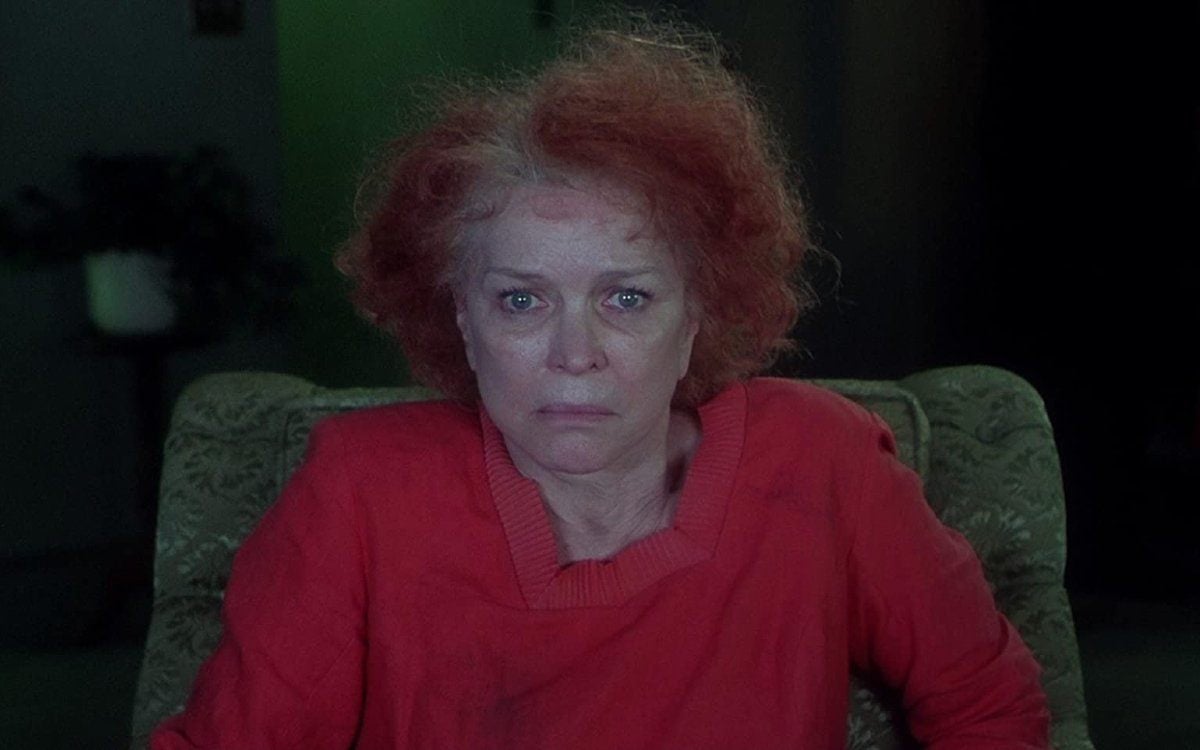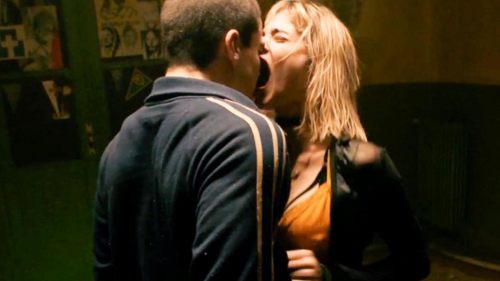Totally Fucked Up: REQUIEM FOR A DREAM
The canon of cinema boasts a wealth of films that have earned the prestigious designation of “classic” and years of exhaustive praise and analysis. But beneath this esteemed catalog exists an “alt-canon” that features some of the most disturbing, provocative, unsettling, deranged, and devastating works in cinematic history. Although often just as masterful as the mainstream and arthouse classics, critics and audiences have found these movies a little harder to love. Totally Fucked Up is a weekly column that examines the films in this alt-canon and the auteurs who made them.
When adapting a novel—or comic book, as is more often the case in 2020—it hardly matters if the details change; the setting, narrative structure and plot developments can change as long as the work remains faithful to the characters and themes. Though Darren Aronofsky's REQUIEM FOR A DREAM is actually based on a novel, this idea extends to his depiction of drug addiction. Superficially speaking, Aronofsky's acutely intense psychological drama isn't the most accurate portrayal of heroin junkies, and that's hardly surprising given the filmmaker's inherently limited view of the world he explores. Released in 2000, the film has the look of sweaty, bruised skin; fortunately, this stylistic approximation of edge is one of the only things that shows the film's age.
But those smaller details hardly matter when held up against the psychological and thematic heft of REQUIEM FOR A DREAM, which accurately dials into the most visceral effects of addiction with a multi-faceted narrative that touches on various experiences—from the poor little rich girl archetype (Jennifer Connelly) to the default white male protagonist (a pre-insufferable Jared Leto) who exploits his elderly mother (Ellen Burstyn), his black friend (Marlon Wayans), and his girlfriend in his selfish pursuits. Whatever commentary there might be regarding white male privilege feels fairly incidental—the Darren Aronofsky of 2020 is more self-aware than the Aronofsky of the late 90s. As evidenced by MOTHER!, that awareness may be brazenly narcissistic, but his 2017 horror film and REQUIEM FOR A DREAM both display the filmmaker's impressive ability to deftly weave ideas into a cohesive thematic tapestry: The former is a meditation on climate change, but it's about artistry, too, and also relationships (both Aronofsky's personal relationships and more generally speaking), while the latter is about addiction and mental illness, but also about the futility of the less privileged aspiring to a manufactured ideal that is designed to remain out of reach—a dangling capitalist carrot that keeps the wheels spinning—and it's about the failures of our healthcare system.
It's also, as explored in the storyline of Sarah Goldfarb (Burstyn), about our hypocritical view of drug addiction and mental illness, and how some (like eating disorders aided by diet pills, aka legal amphetamines) are more socially and morally acceptable than others because a doctor prescribed them.

The plot concerning Sarah's son, Harry (Leto), his girlfriend Marion (Connelly), and their friend Tyrone (Wayans) remains every bit as intense as it was in 2000 (if not more so), particularly in the film's third act, when all three characters are brought to heel by their addiction: A dope-sick Tyrone crying for his absent mother in a jail cell (an aspect of the film that feels a little dated and under-explored); Marion cradling her precious bag of heroin, hard-earned from the film's notorious "ass to ass" scene, in which Marion engages in explicit sexual acts with another woman to entertain wealthy men—dignity is viable currency in this economy; and Harry in a hospital bed, his arm amputated from a neglected abscess and feverishly dreaming of Marion and the exhilarating high she represents. Each of them alone, having met their own tragic ends (as far as the film is concerned).
But it's the story of Sarah Goldfarb that feels the most potent 20 years later, perhaps due to my own personal experience with amphetamines and eating disorders, or maybe Burstyn's remarkable performance—or both. Being the daughter and sister of an alcoholic and an opioid addict, respectively, certainly sharpens that empathy. Sarah's arc is arguably the most fucked up of all: Widowed and alone in her little apartment, Sarah is in willful denial about her son's drug addiction—though not so oblivious that she can't chain the television to the floor to keep him from pawning it for dope money again. He does it anyway because Harry is all Sarah has, the only proof that she exists, and she cannot bear to lose him, too. Better to have Harry around this way than no way at all. At the heart of human sadness is our persistent need to feel special, and we allow too much of our existence to be defined by how others—our friends, our family, our loved ones—perceive us. Like many of us, Sarah self-medicates through escapism, the hours of her days arranged around a structure of television and her clique of elderly female friends—all of whom seem to have happier lives and more successful children. So when an obvious scammer calls Sarah to say she's won the chance to appear on a television show, it's sadly unsurprising that she clings to this development as fervently as Marion snuggles that baggie in the film's final moments.
What follows is Sarah's own invisible odyssey through addiction, aided and abetted by inattentive healthcare providers who work within a system that encourages a lack of compassion and expedient service. All it takes is a quick glance at the scale and Sarah freely admitting she wants to lose a few pounds for the doctor to scribble off a prescription for speed—but, you know, the legal kind. Subsequent visits to the doctor, during which Sarah is clearly displaying signs of drug addiction and mania, result in only more prescriptions and more pills. The visits are so brief that the doctor enters and exits the room without the door ever closing behind him.

Sarah's arc shows us how easily anyone, regardless of age or class or moral upstanding, can slip through the cracks and into the abyss of mental illness and addiction—and that concept is so terrifying in its simplicity. The most disturbing scene in REQUIEM FOR A DREAM, both then and now, occurs as Sarah sits in front of the television, the chain from earlier in the film now wrapped around the refrigerator, which violently shakes and emits threatening, animalistic growls. It is a symbol of Sarah's eating disorder and the hold it has on her psyche, but the very development of that disorder originates with something much deeper in Sarah's mind—something she is not cognizant of: it's that basic human desire to feel special, coupled with a desperate need to achieve a sense of control in the face of her son's addiction and a series of personal tragedies that left her feeling helpless.
As Sarah watches her favorite program—an insidious infomercial for a juice product that allegedly helps people lose weight—she imagines herself as a featured guest: slim and youthful, her gray hair returned to its siren red glory, a stunning figure in her favorite dress. Everyone in the audience adores her. They cheer and clap and chant her name. She proudly touts the accomplishments of her successful son and pays tribute to her dead husband. This habitual dream is interrupted when the TV Sarah disappears from the screen, reappearing in the real Sarah's living room, where she silently mocks the modest trappings of her apartment. The real Sarah is taunted by the illusion of her imagined self and the artificial promise of happiness; the truth is that even after losing weight and gaining favor among her friends, Sarah is still unhappy and alone.
And her ending is the most tragic and unnerving of all: Alone in a mental hospital, doctors and staff ignore her underlying issues. There's a casual cruelty to the application of electroconvulsive therapy, used here not as a tool to heal, but a means to silence what they don't want to hear—to cover a mess rather than clean it up.

_500_281_81_s_c1.jpg)

_500_281_81_s_c1.jpg)